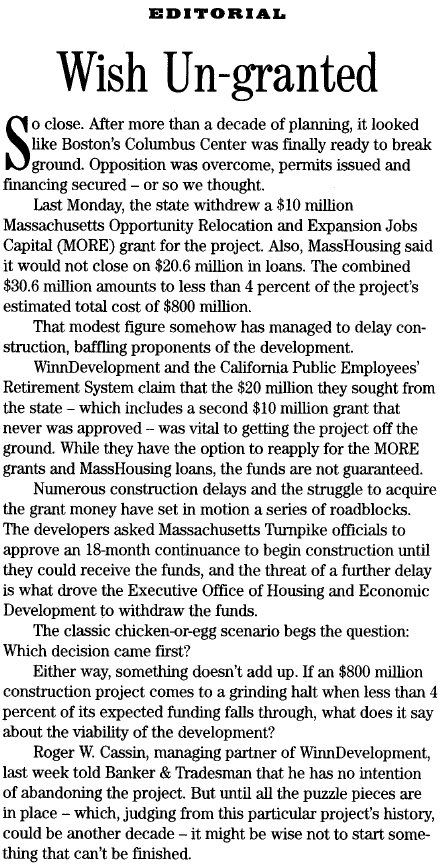Re: Columbus Center
JimboJones,
Mayor Menino gave most seats on his Advisory Committee to the developer on 1 June 1997, and let the developer dictate whom he was allowed to appoint; the Mayor only mailed out the announcement letters.
Members in developer-owned seats always voted as the developer wished, whereas the democratically nominated members always voted as the communities wished. Because the Committee balance was rigged from the outset by its 7-to-4 majority, the public never had a chance. So, yes, all 7 members sitting in seats owned by the developer did vote ?in favor? while all 4 democratically nominated members voted ?opposed.?
What was the process by which the "democratically nominated members" were nominated?
Was there a supervised election with nomination papers and electoral formalities in which the public could participate? If yes...
How many registered voters cast ballots for candidates?
How many people ran?
What was the vote tally for each candidate?
If there was no democratic election, kindly answer the following:
Were these four persons nominated by particular groups?
If so, what groups?
Who selected the groups who would do the nominating?
By what process was that selection made?
What was the process by which group chose to make it's nomination?
Who decided the process each group followed in making nominations?
When?
How many persons attended the meetings at which the nominations occurred?
What was the ratio of members of the public to group members?
Were the nominations open to persons other than group members?
Who made the nominations at each group meeting...an executive committee or were they offered from the floor?
Were the nominations contested by more than one nominee at each nomination meeting?
Were any non-group members nominated and appointed to the four slots?
My concerns are these:
How can any part of the Advisory Committee be deemed to be "democratic" unless all of the members were elected?
If there was no election, why is the opinion of any one party at interest's undemocratically selected delegate any more valid than than the opinion of another party's undemocratically selected delegate?
If there was no public election, how can any appointee claim the mantle of representing "the public"? Democracy isn't supposed to be a clinic in situational ethics. The process is either democratic or it isn't. If there wasn't an election, "the four" are no better or worse, and no more empowered to speak for "the public" than "the seven".
Ned?

